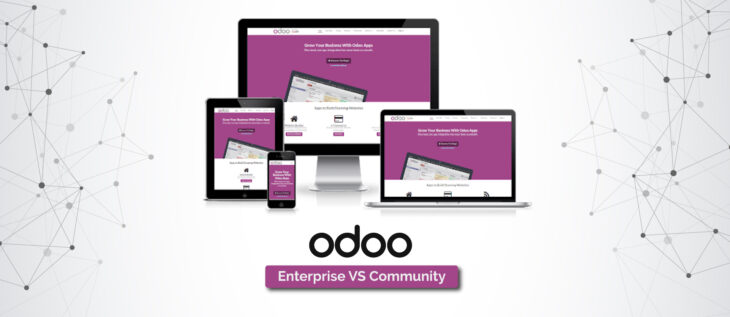
Enterprise Resource Planning (ERP) software is pivotal in enhancing operational efficiency and driving overall success in today’s fast-paced business environment. Odoo ERP stands out for its comprehensive features and modular structure among the myriad ERP solutions available. This blog will guide you through unlocking your business potential by implementing Odoo ERP software.
Understanding Odoo ERP Software: Odoo ERP software is a comprehensive, integrated business management solution covering various applications such as accounting, inventory management, human resources, and more. Renowned for its modular design, Odoo ERP software empowers businesses to selectively adopt and integrate specific modules that align with their unique operational requirements. The software’s popularity stems from its user-friendly interface and open-source nature, making it a preferred choice for businesses of all sizes. Odoo ERP software is a versatile tool, allowing organizations to tailor their management systems to their exact specifications, enhancing overall efficiency and adaptability.
Assessing Business Needs: Before diving into the implementation process, conducting a thorough assessment of your business needs is crucial. Identify pain points, bottlenecks, and areas for improvement. Odoo ERP’s modular structure allows for a tailored approach, so understanding your requirements is critical to selecting suitable modules.
Planning the Implementation: Effective planning is the foundation of a successful Odoo ERP implementation. Set realistic goals, define a timeline, and allocate resources appropriately. Create a cross-functional implementation team with representatives from different departments to ensure a holistic approach. This planning phase lays the groundwork for a seamless integration of Odoo into your business processes.
Selecting Modules: Odoo offers various modules, each catering to specific business functions. For accounting, consider the Accounting and Invoicing modules. Inventory management is streamlined with the Inventory module, while the Human Resources module manages workforce-related tasks. During selection, focus on modules that directly align with your business objectives. This targeted approach ensures that you implement only what is necessary, avoiding unnecessary complexities.
Implementing Odoo ERP is not a one-size-fits-all endeavor. By carefully selecting modules based on your business needs, you set the stage for a more efficient and tailored ERP solution.
In the upcoming sections of this guide, we will delve deeper into the customization options Odoo provides, strategies for seamless data migration, the importance of training and change management, and how Odoo integrates with existing systems. Stay tuned as we unlock the full potential of Odoo ERP for your business success.
Customization Options: One of Odoo ERP’s notable strengths is its customization capabilities. Businesses can tailor the software to meet specific requirements, ensuring it aligns seamlessly with existing workflows. From modifying user interfaces to creating custom reports, Odoo provides the flexibility needed for a personalized ERP solution. Embrace this customization potential to optimize processes and enhance overall efficiency.
Data Migration Strategies: Migrating existing data to Odoo ERP requires careful planning to maintain accuracy and consistency. Odoo offers robust tools for data migration, enabling businesses to transfer information smoothly. This phase involves mapping data fields, cleaning and validating data, and conducting trial migrations to identify and address potential issues. A well-executed data migration strategy is crucial for a successful Odoo implementation.
Training and Change Management: Employee training is a cornerstone of successful Odoo ERP adoption. Ensure your team is well-versed in using the new system to maximize its benefits. Develop comprehensive training programs that cover module-specific functionalities and encourage hands-on practice. Implement change management strategies to address potential resistance to the new system. Involving employees in the transition and providing adequate support will pave the way for a smoother implementation.
Integration with Existing Systems: Seamless integration with existing systems is a critical factor in unlocking the full potential of Odoo ERP. Whether connecting with third-party applications or integrating in-house solutions, Odoo offers robust integration capabilities. Explore how Odoo can become the central hub for your business operations, fostering collaboration and data consistency across departments.
Testing and Quality Assurance: Before the go-live phase, thorough testing is essential to identify and rectify any issues. Odoo ERP provides testing environments to simulate real-world scenarios, allowing businesses to validate workflows and functionalities. Quality assurance ensures that the system operates as intended and minimizes the risk of disruptions post-implementation. Rigorous testing is a critical step in guaranteeing a successful Odoo ERP deployment.
Go-Live and Post-Implementation Support: The go-live phase marks the transition to full-scale use of Odoo ERP. Execute a carefully planned go-live strategy, monitor the system’s performance, and address immediate issues. Post-implementation support addresses user queries, resolves problems, and ensures ongoing system optimization. Establish communication channels for feedback and continuously refine processes to meet evolving business needs.
Conclusion: In conclusion, the comprehensive guide has shed light on the transformative power of Odoo ERP software in reshaping businesses for unparalleled efficiency and growth. We’ve explored the modular design, customization capabilities, and seamless integration offered by Odoo, emphasizing its adaptability to diverse business needs. As TechbotERP, we understand that successful implementation goes beyond technology; it’s about aligning technology with your unique business goals.
